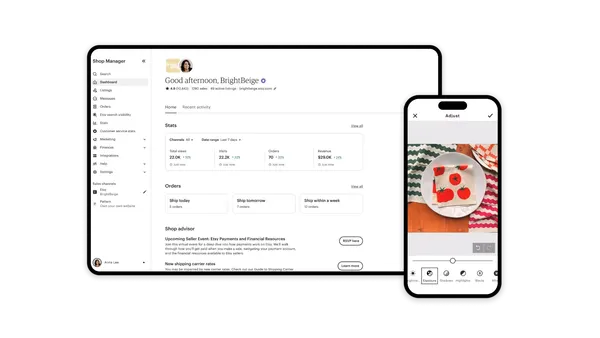Consumers spent more than $860 billion online with U.S. merchants in 2020 — an increase of 44% year over year — according to estimates from Digital Commerce 360. That 44% growth is the highest annual U.S. digital commerce growth in the last two decades.
As consumers embrace online shopping as part of daily life, all companies are trying to figure out how to take advantage of the rise in digital commerce. Many enterprises are struggling, however, because of the constraints of their rigid legacy commerce platforms — which tend to strain organizations' budgets and distract their teams from innovating across various commerce channels.
According to research by DJS Research commissioned by the MACH Alliance, IT teams spend an average of 40% of their time delivering front-office upgrades, and 25% of IT decision-makers spend 50% of their IT budget on front-office upgrades. Worse, more than 50% of senior-level technology decision-makers say they cannot deliver improvements to the customer/end-user experience at speed with their current infrastructure.
"All the other work has to get paused while you're doing upgrades," said Kelly Goetsch, chief product officer at commercetools. "So as a result, there are multiple months through the course of a year where an organization physically cannot release anything to production."
"And just from a cost standpoint, if you're spending 40% of your resources on front-end upgrades, those aren't delivering features at all — they're just keeping you up to date," Goetsch added. "All of that delays work that needs to get done to help you appeal to customers."
As a consequence of rigid platforms stifling their potential to change, both business and IT teams are encountering a chasm between the outcomes they want to achieve and their ability to achieve them.
- Customer acquisition costs rise and average order values stagnate as teams fail to innovate in personalization or promotions.
- Teams are stuck in monthly update cycles and cannot make use of physical stores on digital channels (resulting in lost revenue).
- Adding new channels or touchpoints takes months.
Enterprises that embrace a Modern Commerce Architecture™, on the other hand, have Limitless Commerce Possibilities™. By using a commerce platform built on MACH principles — microservices based, API first, cloud-native, and headless — enterprises can eliminate the time spent on upgrades and seamlessly implement full omnichannel commerce environments, opening up more opportunities to implement new features and innovations.
With the ability to quickly add shopping to any channel, for example, many roadblocks to innovation are removed: Enterprises can modify the customer journey in an hour, launch new promotions in a day, decrease IT release cycle times (helping drastically reduce development and maintenance costs), and increase revenue, order values, and conversion rates through ongoing experimentation — all while maximizing customer insights across different channels and across different brands.
A Modern Commerce Architecture also enables enterprises to easily work with third-party partners to engage in smart business strategies.
"Let's say that your enterprise wants to have a deal-of-the-day app and has a third-party organization that can create it," said Mike Eastman, director of solutions engineering at commercetools. "With a Modern Commerce Architecture, you don't even have to go to your IT team to make that happen. You can essentially outsource that [to the third party] — simply grant them access to the API through the platform and let them be completely independent. A Modern Commerce Architecture lets you innovate and expand your business in these new and different ways."
Ultimately, eliminating upgrades means enterprises can respond to the needs of customers more quickly — helping them to jump on (or spearhead) new trends in the market.
"If you're not spending time on upgrades, you can do feature development, and each of the feature development teams can be working faster and in parallel," Goetsch said. "So you have more time to focus on everything, whether that's higher-value customers or improving your AOV or whatever it happens to be. You have more resources to focus on all of those things."
It all serves to empower enterprises as they look to capitalize on fast-changing consumer behaviors and the rise in digital commerce. Now is the time to embrace new digital commerce possibilities, and a Modern Commerce Architecture makes it possible.
"Moving to a modern commerce platform really helps you realize that omnichannel dream and make it a reality," Eastman said.
For more information or to start a free 60-day trial, go to commercetools.com.










